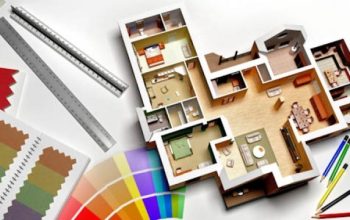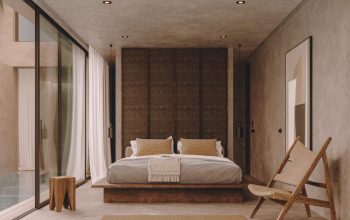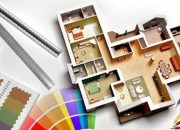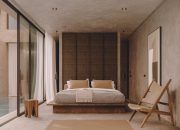Materi Kalkulus dalam Kurikulum Desain Interior

Jurusan desain interior mempelajari kalkuluskah – Yo, what’s up, future interior design gurus! So, you’re probably wondering: Does interior design involve, like,
-serious* math? The short answer is: It depends. While you won’t be diving headfirst into complex calculus equations like a rocket scientist, a solid grasp of fundamental math principles is totally crucial for slaying the design game. Think of it as your secret weapon for creating spaces that are not only aesthetically pleasing but also perfectly functional and, you know,
-actually buildable*.
This article breaks down the role of math, including basic geometry and algebra (and a little peek at where calculus might sneak in), in your interior design journey. Get ready to level up your design skills with some serious math power-ups!
Meskipun bukan inti kurikulum, pemahaman dasar kalkulus bisa membantu mahasiswa desain interior dalam perhitungan proporsi dan volume ruang. Keterampilan ini, terutama dalam visualisasi tiga dimensi, sangat berharga saat berkolaborasi dengan kontraktor, seperti yang ditawarkan oleh layanan jasa desain bangun interior di Surabaya , yang memastikan detail teknis terpenuhi. Jadi, sementara kalkulus bukan syarat mutlak, penguasaan dasar-dasarnya memberikan keunggulan kompetitif bagi lulusan desain interior dalam mengelola proyek-proyek kompleks dan presisi.
Mata Kuliah Desain Interior dan Relevansi Matematika
Let’s be real, a typical interior design curriculum isn’t all about hardcore calculus. But it’s packed with courses where math skills are totally essential. Check out this lineup:
- Drawing and Design Fundamentals: This is where you’ll hone your skills in visualizing spaces and translating those visions into accurate drawings. Geometry is your best friend here!
- Space Planning and Design: Think floor plans, furniture layouts, and maximizing space efficiency. Algebra and geometry are key for calculations and proportions.
- Computer-Aided Design (CAD): CAD software relies heavily on precise measurements and calculations. You’ll be using geometric principles and potentially some basic algebraic formulas for things like scaling and transformations.
- Construction Documents and Specifications: This is where you’ll create the blueprints and detailed specs for your designs. Accuracy is paramount, so a strong math foundation is a must.
- Architectural History and Theory: While seemingly less math-heavy, understanding scale and proportions in historical architecture relies on fundamental geometric concepts.
Penerapan Geometri dan Aljabar dalam Desain Interior
Okay, let’s get down to the nitty-gritty. How does this math stuff actually
-work* in the world of interior design? Think of it like this: geometry provides the framework, and algebra helps you manipulate and refine it.
Geometry is all about shapes, sizes, and spatial relationships. You’ll use it to calculate areas, volumes, and angles – essential for determining furniture placement, window sizes, and even the flow of traffic within a space. For example, calculating the area of a room to determine the amount of flooring needed is pure geometry.
Algebra comes into play when you need to solve for unknowns. Let’s say you’re working with a scale model. You know the dimensions of the model and the scale factor, and you need to calculate the actual dimensions of the room. That’s where algebra shines!
Contoh Penerapan Aljabar dan Geometri: Skala dan Proporsi
Imagine you’re designing a living room. You have a scale model where 1 inch equals 1 foot in real life. You measure a sofa on your model to be 3 inches long. Using algebra (simple multiplication!), you know the actual sofa length will be 3 feet. Geometry helps you figure out if that 3-foot sofa will fit comfortably within the room’s dimensions (another geometric calculation!).
Similarly, you might use the golden ratio (a geometric concept) to create pleasing proportions in your design. This involves applying a specific ratio (approximately 1.618) to different elements within the room to achieve visual harmony. This ensures balance and aesthetic appeal, making the space feel more comfortable and inviting.
Perbandingan Kebutuhan Matematika dalam Desain Interior dan Teknik Sipil
| Nama Jurusan | Mata Kuliah Relevan | Tingkat Kompleksitas Matematika | Contoh Penerapan |
|---|---|---|---|
| Desain Interior | Space Planning, CAD, Construction Documents | Dasar (Geometri, Aljabar) | Menghitung luas ruangan, menentukan skala dalam gambar, menghitung jumlah material |
| Teknik Sipil | Kalkulus, Mekanika, Struktur Bangunan | Tinggi (Kalkulus, Persamaan Diferensial) | Menganalisis kekuatan struktur, menghitung beban, merancang pondasi bangunan |
Peran Matematika dalam Perancangan Desain Interior
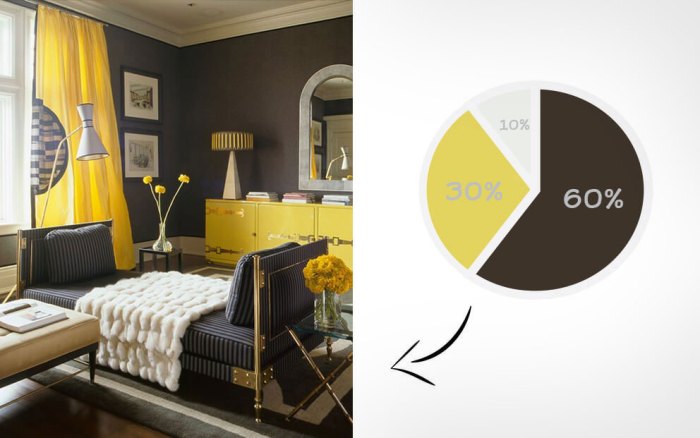
Yo, what’s up, future interior design pros? Think designing is all about aesthetics and picking pretty colors? Think again! Math is totally the secret weapon you need to level up your design game. From nailing those perfect proportions to ensuring your space is structurally sound, math is the unsung hero of killer interior design. Let’s dive into how it all works.
Geometri dalam Menentukan Proporsi dan Keseimbangan Ruangan
Geometri isn’t just some stuffy old school subject; it’s the foundation for creating spaces that are both visually appealing and functional. Think about the golden ratio – that magical 1:1.618 proportion that shows up everywhere in nature and design. Using geometric principles like the golden ratio helps you create harmonious layouts, balanced furniture arrangements, and a generally rad vibe in your designs.
Mastering shapes, angles, and proportions is key to avoiding those design fails that scream “amateur hour.”
- Proporsi ruangan ditentukan melalui perbandingan panjang, lebar, dan tinggi ruangan. Perbandingan yang tepat menciptakan keseimbangan visual.
- Penggunaan bentuk-bentuk geometris dasar seperti persegi, persegi panjang, dan lingkaran dapat menciptakan pola dan ritme yang menarik.
- Prinsip simetri dan asimetri dapat diterapkan untuk menciptakan keseimbangan yang berbeda, sesuai dengan gaya desain yang diinginkan.
Penggunaan Trigonometri dalam Perhitungan Sudut dan Kemiringan
Trigonometri? Yeah, it’s not as scary as it sounds. It’s all about angles, and in design, angles are everywhere! Need to figure out the perfect angle for a sloped ceiling? Calculating the precise cut for a custom-built bookshelf? Trigonometry is your go-to tool for solving these spatial puzzles.
Knowing your sine, cosine, and tangent will help you avoid those awkward design mishaps.
- Trigonometri digunakan untuk menghitung sudut kemiringan atap, tangga, dan elemen desain lainnya yang membutuhkan presisi.
- Perhitungan sudut pandang penting dalam penempatan furniture dan pencahayaan untuk memaksimalkan kenyamanan dan estetika.
- Dengan trigonometri, kita bisa memastikan bahwa semua elemen desain terhubung secara harmonis dan fungsional.
Contoh Perhitungan Volume dan Luas Ruangan
Let’s get practical. Imagine you’re designing a living room. You need to know the exact square footage to figure out flooring, and the cubic footage to estimate the amount of air conditioning needed. Basic formulas for area (length x width) and volume (length x width x height) are your BFFs here. Knowing these is crucial for accurate budgeting and material ordering.
- Untuk menghitung luas lantai sebuah ruangan berukuran 4m x 5m, rumusnya adalah 4m x 5m = 20m². Ini menentukan jumlah material lantai yang dibutuhkan.
- Untuk menghitung volume ruangan dengan tinggi 3m, rumusnya adalah 20m² x 3m = 60m³. Ini membantu dalam menentukan kapasitas pendingin ruangan yang diperlukan.
- Perhitungan luas dan volume juga penting dalam menentukan kapasitas penyimpanan dan perencanaan tata letak furnitur.
Kalkulator dan Perangkat Lunak Desain dalam Perhitungan Kompleks, Jurusan desain interior mempelajari kalkuluskah
Okay, so you don’t have to be a human calculator. Plenty of awesome tools can handle the heavy lifting. Design software like AutoCAD, SketchUp, and Revit are loaded with features that automate calculations, making complex projects much more manageable. These programs can handle everything from calculating material quantities to generating 3D models, saving you tons of time and effort.
It’s all about using the right tools to make your design process smoother and more efficient.
- Perangkat lunak desain membantu dalam perhitungan yang kompleks dan akurat, termasuk perhitungan material, pencahayaan, dan simulasi 3D.
- Kalkulator online dan aplikasi seluler juga dapat membantu dalam perhitungan cepat dan mudah, terutama untuk perhitungan sederhana.
- Penggunaan teknologi ini meningkatkan efisiensi dan akurasi dalam proses perancangan interior.
Contoh Sketsa Desain Ruangan dan Perhitungan Matematis
Let’s say we’re designing a small bedroom. We want a bed (1.5m x 2m), a wardrobe (1m x 0.5m), and a small desk (1m x 0.75m). The room is 3m x 4m. Using basic geometry and area calculations, we can determine if the furniture will fit comfortably and leave enough space for movement. We can also play around with different arrangements to optimize the space.
This simple example showcases how math plays a vital role in the layout and functionality of the design.
- Luas ruangan: 3m x 4m = 12m²
- Luas tempat tidur: 1.5m x 2m = 3m²
- Luas lemari: 1m x 0.5m = 0.5m²
- Luas meja: 1m x 0.75m = 0.75m²
- Total luas furnitur: 3m² + 0.5m² + 0.75m² = 4.25m²
- Sisa luas ruangan: 12m²
-4.25m² = 7.75m² (ruang gerak)
Alternatif Perhitungan dalam Desain Interior Tanpa Kalkulus

Yo, future interior designers! Kalkulus mungkin terdengar super intimidating, kayak menghadapi final boss di game favoritmu. Tapi tenang, desain interior nggak selalu butuh rumus-rumus rumit itu. Ada banyak jalan pintas, dan software desain interior adalah senjata rahasia kita!
Software Desain Interior dan Fitur Perhitungannya
Software desain interior modern, kayak SketchUp, Revit, atau Sweet Home 3D, udah kayak cheat code untuk perhitungan desain. Mereka punya fitur-fitur canggih yang bikin pekerjaan kita jadi jauh lebih mudah dan efisien. Lupakan kalkulator dan coretan-coretan manual yang bikin kepala pusing!
- SketchUp: SketchUp punya fitur pengukuran yang super akurat. Kamu bisa langsung ngecek luas ruangan, volume, dan bahkan menghitung jumlah material yang dibutuhkan secara otomatis. Bayangkan, nggak perlu lagi pakai rumus panjang lebar untuk hitung volume sofa!
- Revit: Revit lebih powerful lagi, khususnya untuk proyek-proyek skala besar. Software ini bisa ngitung otomatis luas permukaan dinding, volume ruangan, dan bahkan bisa membantu dalam manajemen material. Ini sangat membantu untuk efisiensi biaya dan waktu.
- Sweet Home 3D: Sweet Home 3D cocok banget untuk pemula. Meskipun fiturnya nggak selengkap Revit atau SketchUp, tapi cukup powerful untuk menghitung luas ruangan, volume, dan membantu dalam penataan furnitur secara visual.
Penggunaan Fitur Perhitungan Otomatis dalam Software Desain Interior
Gimana cara pakai fitur-fitur keren ini? Gampang banget, kok! Coba deh ikuti langkah-langkah berikut ini:
- Buat model 3D ruangan: Masukkan ukuran ruangan secara akurat ke dalam software.
- Gunakan fitur pengukuran: Software biasanya menyediakan tools pengukuran yang mudah digunakan. Klik dan drag untuk mengukur panjang, lebar, dan tinggi ruangan.
- Hitung luas dan volume: Setelah model 3D selesai, software akan otomatis menghitung luas lantai, luas dinding, dan volume ruangan. Beberapa software bahkan bisa menghitung volume furnitur.
- Sesuaikan proporsi: Software membantu memastikan proporsi ruangan tetap seimbang dan nyaman. Kamu bisa dengan mudah mengubah ukuran objek dan melihat perubahannya secara real-time.
Keuntungan Penggunaan Software Desain Interior
Software desain interior bukan cuma mempercepat proses perhitungan, tapi juga memberikan visualisasi yang akurat. Ini membantu kita untuk mengidentifikasi potensi masalah desain sejak dini dan menghindari kesalahan yang mahal. Bayangkan, nggak perlu lagi bongkar pasang karena salah hitung!
Keterampilan Matematika yang Dibutuhkan Desainer Interior
Yo, future interior designers! Think designing is all about aesthetics and picking pretty colors? Think again! Math is totally a vibe in the world of interior design, and it’s way more crucial than you might think. From figuring out the perfect room layout to ensuring your design is structurally sound and within budget, math skills are your secret weapon to creating spaces that are both stunning and functional.
Let’s break down the math skills that’ll make you a design boss.
Keterampilan Matematika Penting dalam Desain Interior
Several key mathematical skills are essential for a successful interior design career. These aren’t just about basic arithmetic; we’re talking about applying mathematical principles to real-world design challenges. Mastering these will seriously level up your design game.
- Geometri dan Trigonometri: This is your go-to for calculating angles, areas, volumes, and figuring out how furniture will fit in a space. Think about calculating the precise angles needed for a custom-built bookcase or determining the exact amount of flooring needed for a room.
- Aljabar: Solving equations is clutch for scaling designs, calculating material costs, and managing budgets. Imagine needing to scale down a design by 20% – algebra makes it smooth.
- Kalkulus (diferensial dan integral): While not as frequently used as geometry or algebra, calculus can be beneficial for more complex design problems, particularly when dealing with curves, optimization, and spatial analysis. For example, optimizing the flow of a space or calculating the most efficient use of materials.
- Statistik dan Probabilitas: These skills are useful for market research, understanding client preferences, and making informed decisions about design choices. You might use statistics to determine the most popular color schemes or furniture styles among your target audience.
Penggunaan Keterampilan Matematika dalam Praktik Desain Interior Sehari-hari
It’s not just about textbook problems; math is woven into every aspect of the design process. Let’s dive into some real-world applications.
- Perencanaan Tata Letak: Calculating room dimensions, furniture placement, and traffic flow all require precise measurements and spatial reasoning. A small miscalculation could mean furniture that doesn’t fit or awkward pathways.
- Pengukuran dan Skala: Creating accurate scale drawings and models is essential for communicating design ideas and ensuring everything fits perfectly. Incorrect scaling can lead to significant errors during construction.
- Penganggaran dan Manajemen Biaya: Calculating material costs, labor costs, and overall project budgets requires strong mathematical skills. Underestimating costs can lead to financial difficulties.
- Pemilihan Material: Calculating the required amount of materials like paint, wallpaper, or flooring requires accurate measurements and calculations to avoid waste or shortages.
Dampak Kurangnya Penguasaan Keterampilan Matematika pada Hasil Desain
Missing the mark on your math can have serious consequences. Imagine a situation where you’ve designed a beautiful kitchen, but the island is too big for the space, making it impossible to navigate. Or, perhaps you’ve underestimated the amount of paint needed, leading to color inconsistencies and extra costs. Math is your safety net against design disasters.
Meningkatkan Kemampuan Matematis dalam Desain Interior
Don’t stress if math isn’t your forte! There are plenty of ways to sharpen your skills. Online courses, workshops, and even just practicing calculations related to your projects will improve your proficiency. The more you apply math to real-world design challenges, the more confident and proficient you’ll become.
Ilustrasi Penggunaan Perhitungan Skala dan Proporsi dalam Merancang Tata Letak Ruangan
Let’s say you’re designing a living room. You’ve measured the actual room dimensions: 5 meters by 4 meters. You want to create a scale drawing using a scale of 1:50. This means 1 centimeter on your drawing represents 50 centimeters (or 0.5 meters) in real life. To represent the 5-meter length of the room, you’d draw a line 10 centimeters long (5 meters / 0.5 meters/cm = 10 cm).
Similarly, the 4-meter width would be represented by an 8-centimeter line. Then, you carefully place furniture on your scaled drawing, maintaining the proportions of the real furniture to the scale of the drawing. This ensures everything fits harmoniously and proportionally within the space.
Pertanyaan yang Sering Muncul: Jurusan Desain Interior Mempelajari Kalkuluskah
Apakah saya perlu mengambil mata kuliah kalkulus untuk kuliah desain interior?
Tidak, umumnya tidak diwajibkan. Fokusnya lebih pada matematika dasar seperti aljabar dan geometri.
Software desain apa yang paling sering menggunakan perhitungan otomatis?
AutoCAD, SketchUp, Revit, dan beberapa software desain interior lainnya memiliki fitur perhitungan otomatis untuk luas, volume, dan proporsi.
Seberapa penting kemampuan menggambar bagi mahasiswa desain interior?
Sangat penting. Kemampuan menggambar tangan membantu visualisasi ide dan berkomunikasi dengan klien sebelum menggunakan software desain.
Apakah ada perbedaan signifikan dalam kebutuhan matematika antara desain interior dan arsitektur?
Ya, arsitektur umumnya membutuhkan pemahaman matematika yang lebih kompleks, termasuk kalkulus, statika, dan dinamika.


